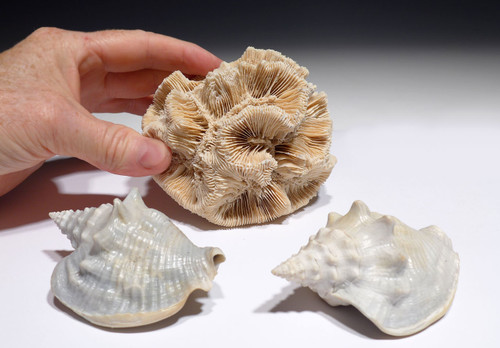Product Description
Known for its splendid array of gastropod fossils, Florida is home to many fossil shell species in abundance. The nature of finding a gastropod fossil in a shell pit, for example, usually means that it will be heavily weathered and seriously damaged. Certainly, delicate features of the shell are almost always missing. What is most unique and exciting about this fossil specimen of Busycon carica is that all the anatomy is still intact and well-preserved. The pointed whorl is complete and overall surface detail is still present and wonderfully visible. The outer surface has a beautiful hint of blue mottling! Do not confuse this genuine fossil with inexpensive MODERN shells available in shell shops from this species. The interior is still filled with the original fossil shell matrix of the pit from which it was collected. This complete and very high-grade fossil specimen came from a prehistoric sea snail that lived 5 million years ago, crawling around the ocean floor when the massive Megalodon shark still terrorized the warm waters off the southeastern Atlantic coast of prehistoric North America. This remarkable gastropod fossil is recommended for its immense size and display appeal.
If you want a stunning and massive prehistoric sea snail fossil for display, we highly recommend this example. This is the largest fossil shell species of this region we could offer and makes for a highly interesting display when accompanied by other marine fossils from the same time period such as fossil shark teeth (Megalodon!), corals and bivalves.
HISTORY
Busycon carica, otherwise known as the "Knobbed Whelk", is the official state shell of Georgia, USA. This large gastropod is still alive today. In prehistoric times during the Pliocene Period, this predatory marine invertebrate roamed the ocean floor searching for its primary victim, bivalves. This whelk feeds by attaching itself to its prey with its foot and slowly rasping a hole in the shell of its unfortunate victim.
CLICK HERE TO LEARN MORE ABOUT GASTROPODS
 US DOLLAR
US DOLLAR
 EURO
EURO
 AUSTRALIAN DOLLAR
AUSTRALIAN DOLLAR
 CANADIAN DOLLAR
CANADIAN DOLLAR
 POUND STERLING
POUND STERLING














